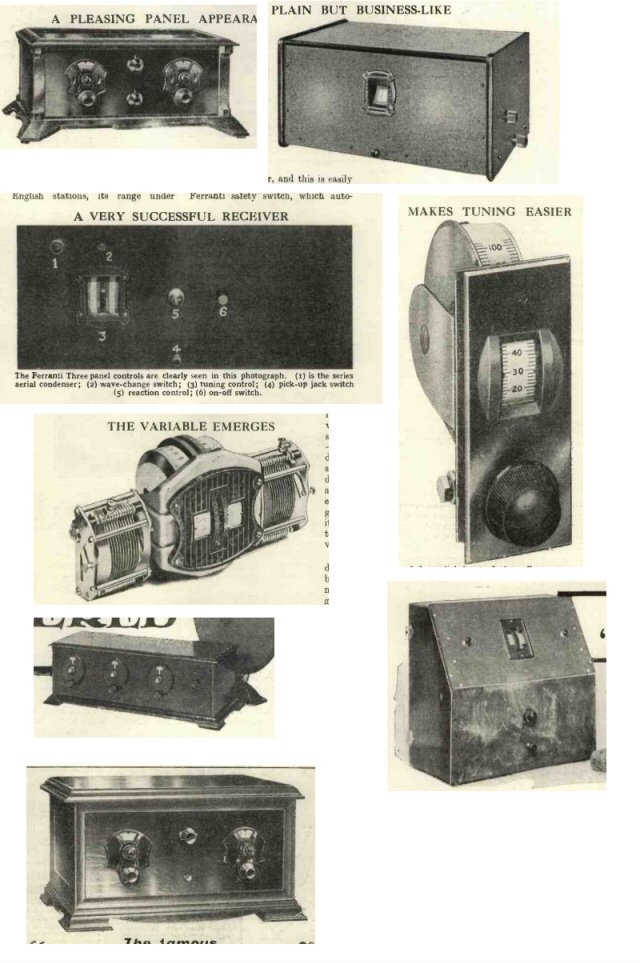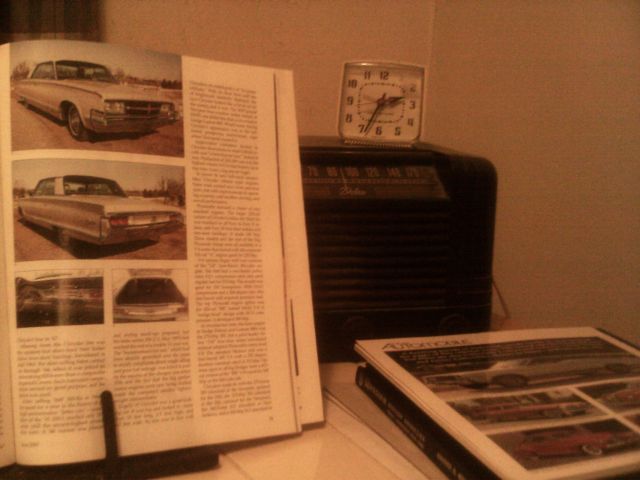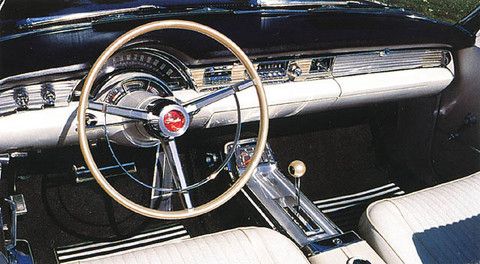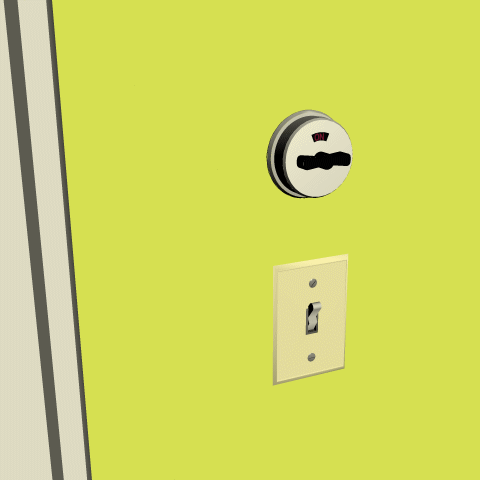Tuesday, August 08, 2017
Is a dial round?
A vague "thought" triggered by noticing a pattern in a 1931 British radio magazine.
Nearly all of the radios shown in the mag had what you might call 'quasi-digital' dials.
 Some pivoted on Z-axis, some on X-axis, but all showed only a small piece of the full circle. This was a brief fashion in both radios and automobile speedometers. I suppose the idea was to limit your range of attention. Bad idea. The whole point of an analog display is that you can see your current situation in context. There are several ways to get there, by colors or shapes or a dot on a map or the angle of a needle; but seeing only the currently used digit defeats the purpose.
Radio dials and speedometers soon returned to full-circle.
We need to see the whole available range on an instrument. Or do we?
It's not that simple.
Di-al, day-like, began with sundials. Are sundials full circle? No. The base is often circular, but the actual range of indication is roughly a 270 degree arc, representing the day-like part of the day.
Some pivoted on Z-axis, some on X-axis, but all showed only a small piece of the full circle. This was a brief fashion in both radios and automobile speedometers. I suppose the idea was to limit your range of attention. Bad idea. The whole point of an analog display is that you can see your current situation in context. There are several ways to get there, by colors or shapes or a dot on a map or the angle of a needle; but seeing only the currently used digit defeats the purpose.
Radio dials and speedometers soon returned to full-circle.
We need to see the whole available range on an instrument. Or do we?
It's not that simple.
Di-al, day-like, began with sundials. Are sundials full circle? No. The base is often circular, but the actual range of indication is roughly a 270 degree arc, representing the day-like part of the day.
 We've grown accustomed to full-circle mechanical clocks, developed from the convenience of gears and spiral springs. We think of DIAL as a full circle because of mechanical clocks, but that's really the exception.
As I was thinking about this I realized that I was looking at all three possibilities within my range of vision....
We've grown accustomed to full-circle mechanical clocks, developed from the convenience of gears and spiral springs. We think of DIAL as a full circle because of mechanical clocks, but that's really the exception.
As I was thinking about this I realized that I was looking at all three possibilities within my range of vision....

 The clock is full-circle, the 1940 radio is a linear dial, and the meter is an arc. What about the magazine? Not clearly visible, but the '65 Chrysler dashboard ALSO has all three types on it.
Closer view from an online pic:
The clock is full-circle, the 1940 radio is a linear dial, and the meter is an arc. What about the magazine? Not clearly visible, but the '65 Chrysler dashboard ALSO has all three types on it.
Closer view from an online pic:
 Arc speedometer (a Chrysler specialty, and a beautiful and readable device!) linear radio, and full-circle clock.
Restricted arcs are also common on household controls. The snap switch was popular at the same time as the restricted-view radio dials above. Snap switches moved in a full circle but only showed you the currently active selection. Snap switches were replaced by toggle switches, with a restricted arc of motion.
Arc speedometer (a Chrysler specialty, and a beautiful and readable device!) linear radio, and full-circle clock.
Restricted arcs are also common on household controls. The snap switch was popular at the same time as the restricted-view radio dials above. Snap switches moved in a full circle but only showed you the currently active selection. Snap switches were replaced by toggle switches, with a restricted arc of motion.
 Incidentally, note that your eyes take a moment to adjust to the darkness in this little GIF, even though the actual illumination in your surroundings hasn't changed! See well-formed habit patterns.
= = = = =
Later: I was rereading the above to check for typos and poor logic. Didn't see any, so clicked onto some "local" "news" and saw this:
Incidentally, note that your eyes take a moment to adjust to the darkness in this little GIF, even though the actual illumination in your surroundings hasn't changed! See well-formed habit patterns.
= = = = =
Later: I was rereading the above to check for typos and poor logic. Didn't see any, so clicked onto some "local" "news" and saw this:
 Makes the first point better than I did! The vertical drum is a poor choice for showing the full context of a reading, but it's an EXCELLENT choice when the designer wants to HIDE the full context, as in gambling.
Makes the first point better than I did! The vertical drum is a poor choice for showing the full context of a reading, but it's an EXCELLENT choice when the designer wants to HIDE the full context, as in gambling.
 Some pivoted on Z-axis, some on X-axis, but all showed only a small piece of the full circle. This was a brief fashion in both radios and automobile speedometers. I suppose the idea was to limit your range of attention. Bad idea. The whole point of an analog display is that you can see your current situation in context. There are several ways to get there, by colors or shapes or a dot on a map or the angle of a needle; but seeing only the currently used digit defeats the purpose.
Radio dials and speedometers soon returned to full-circle.
We need to see the whole available range on an instrument. Or do we?
It's not that simple.
Di-al, day-like, began with sundials. Are sundials full circle? No. The base is often circular, but the actual range of indication is roughly a 270 degree arc, representing the day-like part of the day.
Some pivoted on Z-axis, some on X-axis, but all showed only a small piece of the full circle. This was a brief fashion in both radios and automobile speedometers. I suppose the idea was to limit your range of attention. Bad idea. The whole point of an analog display is that you can see your current situation in context. There are several ways to get there, by colors or shapes or a dot on a map or the angle of a needle; but seeing only the currently used digit defeats the purpose.
Radio dials and speedometers soon returned to full-circle.
We need to see the whole available range on an instrument. Or do we?
It's not that simple.
Di-al, day-like, began with sundials. Are sundials full circle? No. The base is often circular, but the actual range of indication is roughly a 270 degree arc, representing the day-like part of the day.
 We've grown accustomed to full-circle mechanical clocks, developed from the convenience of gears and spiral springs. We think of DIAL as a full circle because of mechanical clocks, but that's really the exception.
As I was thinking about this I realized that I was looking at all three possibilities within my range of vision....
We've grown accustomed to full-circle mechanical clocks, developed from the convenience of gears and spiral springs. We think of DIAL as a full circle because of mechanical clocks, but that's really the exception.
As I was thinking about this I realized that I was looking at all three possibilities within my range of vision....

 The clock is full-circle, the 1940 radio is a linear dial, and the meter is an arc. What about the magazine? Not clearly visible, but the '65 Chrysler dashboard ALSO has all three types on it.
Closer view from an online pic:
The clock is full-circle, the 1940 radio is a linear dial, and the meter is an arc. What about the magazine? Not clearly visible, but the '65 Chrysler dashboard ALSO has all three types on it.
Closer view from an online pic:
 Arc speedometer (a Chrysler specialty, and a beautiful and readable device!) linear radio, and full-circle clock.
Restricted arcs are also common on household controls. The snap switch was popular at the same time as the restricted-view radio dials above. Snap switches moved in a full circle but only showed you the currently active selection. Snap switches were replaced by toggle switches, with a restricted arc of motion.
Arc speedometer (a Chrysler specialty, and a beautiful and readable device!) linear radio, and full-circle clock.
Restricted arcs are also common on household controls. The snap switch was popular at the same time as the restricted-view radio dials above. Snap switches moved in a full circle but only showed you the currently active selection. Snap switches were replaced by toggle switches, with a restricted arc of motion.
 Incidentally, note that your eyes take a moment to adjust to the darkness in this little GIF, even though the actual illumination in your surroundings hasn't changed! See well-formed habit patterns.
= = = = =
Later: I was rereading the above to check for typos and poor logic. Didn't see any, so clicked onto some "local" "news" and saw this:
Incidentally, note that your eyes take a moment to adjust to the darkness in this little GIF, even though the actual illumination in your surroundings hasn't changed! See well-formed habit patterns.
= = = = =
Later: I was rereading the above to check for typos and poor logic. Didn't see any, so clicked onto some "local" "news" and saw this:
 Makes the first point better than I did! The vertical drum is a poor choice for showing the full context of a reading, but it's an EXCELLENT choice when the designer wants to HIDE the full context, as in gambling.
Makes the first point better than I did! The vertical drum is a poor choice for showing the full context of a reading, but it's an EXCELLENT choice when the designer wants to HIDE the full context, as in gambling.Labels: Metrology
